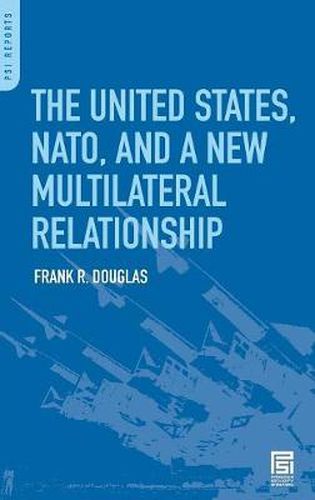Readings Newsletter
Become a Readings Member to make your shopping experience even easier.
Sign in or sign up for free!
You’re not far away from qualifying for FREE standard shipping within Australia
You’ve qualified for FREE standard shipping within Australia
The cart is loading…






Formed in the aftermath of WWII and in the face of the emerging threat posed by the Soviet Union, the transformation that has taken place in recent years within NATO has been neither natural nor easy for the multi-national organization or the United States. When the Soviet Union ceased to exist it seemed NATO would disappear too. The rationale for a large American military deployment in Europe, described by President Eisenhower as a temporary move, no longer could be supported. This work documents the transition of the United States relationship with NATO from a focus on the defense of Western Europe to an inclusive military and political organization concerned with the security of all of Europe with the real potential for employment of its military power beyond the European continent. Despite budgeting and economic concerns raised by key members of the U.S. Congress, President George H.W. Bush supported the status quo and was caught completely off guard when the Berlin Wall fell. He and Defense Secretary Dick Cheney had not fully understood the changed strategic environment in Europe but the U.S. Congress did and offered many suggestions. NATO was saved. President Bill Clinton continued to promote the validity of NATO, expanded NATO eastwards, reduced the U.S. troop level in Europe to 100,000, and gave NATO a mission beyond warfare with the peacekeeping task in Bosnia. A new Atlantic relationship had been forged for the post-Cold War period.
$9.00 standard shipping within Australia
FREE standard shipping within Australia for orders over $100.00
Express & International shipping calculated at checkout
Formed in the aftermath of WWII and in the face of the emerging threat posed by the Soviet Union, the transformation that has taken place in recent years within NATO has been neither natural nor easy for the multi-national organization or the United States. When the Soviet Union ceased to exist it seemed NATO would disappear too. The rationale for a large American military deployment in Europe, described by President Eisenhower as a temporary move, no longer could be supported. This work documents the transition of the United States relationship with NATO from a focus on the defense of Western Europe to an inclusive military and political organization concerned with the security of all of Europe with the real potential for employment of its military power beyond the European continent. Despite budgeting and economic concerns raised by key members of the U.S. Congress, President George H.W. Bush supported the status quo and was caught completely off guard when the Berlin Wall fell. He and Defense Secretary Dick Cheney had not fully understood the changed strategic environment in Europe but the U.S. Congress did and offered many suggestions. NATO was saved. President Bill Clinton continued to promote the validity of NATO, expanded NATO eastwards, reduced the U.S. troop level in Europe to 100,000, and gave NATO a mission beyond warfare with the peacekeeping task in Bosnia. A new Atlantic relationship had been forged for the post-Cold War period.